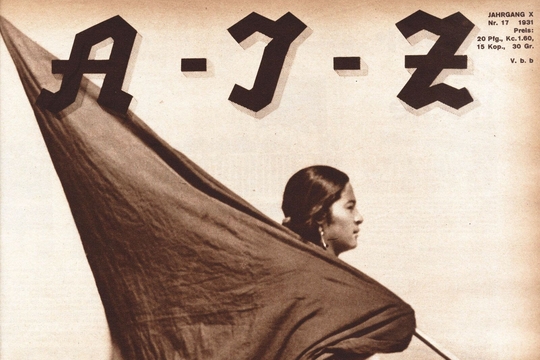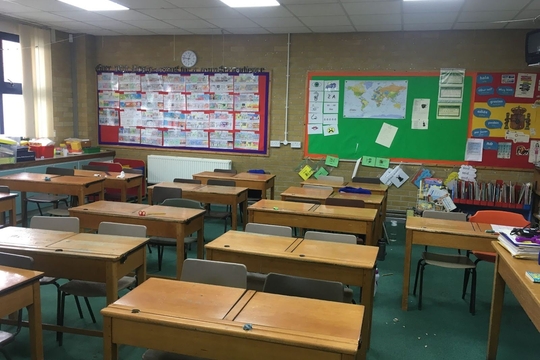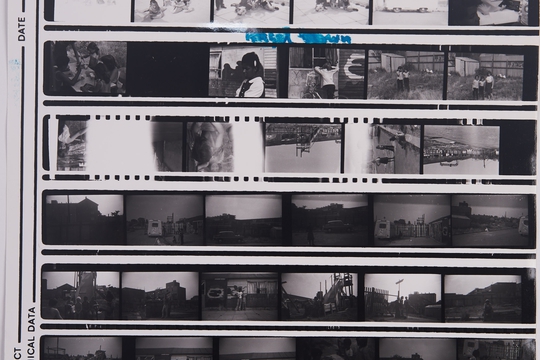Institution of Autonomy: The Worker Photography Movement
by
Steve Edwards
October 11, 2024
Featured in Photos from Below (Book)
Steve Edwards explores the history of the ‘worker photography’ movement in 1920 and 1930s Europe.

theory
Institution of Autonomy: The Worker Photography Movement
by
Steve Edwards
/
Oct. 11, 2024
in
Photos from Below
(Book)
Steve Edwards explores the history of the ‘worker photography’ movement in 1920 and 1930s Europe.
The worker photography movement was a feature of the militant working-class culture of the 1920s and 1930s and, in an important sense, is an early example of workers’ inquiry. The movement dates roughly from 1926; the year when the nominally independent German communist publication Arbeiter-Illustrierte-Zeitung called for amateur worker-photographers to supply the paper with images, as well as the formation of VdAFD – the Association of German Worker Photographers and its journal Der Arbeiter-Fotograf. Simultaneously, in the USSR, the publication Sovetskoe foto appeared and the first worker-photography exhibition was held in Moscow. The movement was intended to counter bourgeois propaganda and create images by, and for, working people that might serve the Left-wing press. The movement was an important example of representation from below.1
The workers’ film and photo league was formed in the mid-1920s by Willi Münzenberg as part of the Workers International Relief, an organisation established in 1921, at the behest of Lenin, to collect money to support people suffering from famine in the USSR. It subsequently collected international donations for striking workers and supported imprisoned activists and their families. As an organisation it was never officially part of the Comintern, but a shadow organisation of the ‘Münzenberg concern’. That is to say, it was a component of the extensive network of groups and publications set up and run by Münzenberg that supported the Communist movement, but retained its own perspectives separate from the twists-and-turns of the Stalinist line. This ‘concern’ was a vital component of the large German Communist Culture of the 1920s and a significant feature of its success (if we can call the ultimate defeat by fascism a success). Mikhail Kol’tsov was central to some similar projects in the USSR. As part of the debate on Soviet ‘Factography’,2 the writer, theorist and editor of the radical avant-garde magazine Novyi Lef, Sergei Tret’iakov called for the creation of worker correspondents to supply the radical press, turning readers into writers or photographers. Walter Benjamin and Bertolt Brecht met Tret’iakov in Moscow and were influenced by his work. This idea was central to Benjamin’s argument in ‘The Author as Producer’ (1934)3, but it has received the least attention among these discussions, probably because it is less amenable to treatment as ‘art’.
In some places the movement relied on professionally-trained photographers and designers, but ‘worker photography’ came to be used as a term for those images produced with a militant orientation for the organised Left. The resulting pictures appeared in papers and magazines, exhibitions and books; there were also collective production facilities and instruction manuals. In 1931, at its height in Germany, the movement claimed 2,400 members in more than hundred local groups. There were also groups in Austria, Czechoslovakia, Britain, France, Germany, Holland, Hungary, Spain, the USA and the USSR. There appears also to have been a group in Bulgaria working in illegal conditions under the fascist regime, but there is little surviving evidence. The Popular Front incarnation in the US known as the Photo-League probably did as much as anything to shape humanist documentary.4 The League advocated realism in opposition to styles of art photography, such as Pictorialism5; it also recommended proletarian photographers spurn bourgeois genres, such as nudes, bourgeois portraits and still lifes. It ran a headquarters and its own photography school; it held exhibitions, lectures and symposia; issued a newsletter and preserved the Lewis Hine memorial collection. 6
Some of these groups were much stronger than others. The British group was pretty weak, and those in Germany and the USSR were easily the strongest. There were also significant differences between groups. The Czech texts are highly sophisticated, the US and French work tends to reproduce the humanism associated with the Popular Front, yet other material is rudimentary. Part of the problem of tracking the worker photography movement – certainly the differences and contradictions between the amateur/professional, and/or militant/populist – is that it involves surveying a period which involved multiple twists and turns in Comintern policy, given the movement was never entirely independent of Moscow. For instance the US group went through several incarnations, eventually dropping ‘Workers’ from its name.7
The aim of the movement was to redirect worker hobbyism in photography into militant channels; creating a space of autonomy in which photographs of working-class life – images from the tenements, workplaces and slums, as well as pictures from demonstrations and other political manifestations – would be produced by and for workers. There are plenty of pictures of demonstrations, strikes and general conditions, but also some attempts to depict the labour process and analyse the workers place in the totality of capitalist social relations. At the same time, the movement aimed at developing skills among its members and contributed to the politicising of everyday life. In an important sense, this was a culture of workers’ reporting.
Titles of photographs from a US exhibition held in 1930 help give the flavour: Workers, Speed-Up, Exploitation, Red Day, Mobilization at Work, etc.8 The worker photography movement constituted a production apparatus for supplying the left press with the images they needed at a point when newspapers and magazines increasingly came to rely on pictures – the press became an illustrated press. Benedict Anderson’s notion of ‘print-capitalism’ has become a common point of reference, but in an important sense this has to be modified. Print capitalism is not simply a culture of the word, but – at least from around 1900 when it became feasible to publish large editions of printed material with a significant number of cheaply produced photographs – also one dependent on images. Publications don’t just consist of intellectual arguments in written articles, but also design and images. The Left ignores this aspect of cultural production at its peril, and the Worker Photography movement provides an important precedent for critical work outside the established bourgeois institutions.
Some of the images are obviously more compelling than others, but taken together they reshape our perception of modernity and photographic culture. A second modernity emerges in this work alongside the official version studied by art historians and cultural critics. This shadow modernity articulates working-class perceptions of social and cultural change.9 We can identify a number of key themes in the Worker Photography movement. First, and most obviously, worker photography is distinguished from bourgeois camera work. Sometimes this was pushed to a distinction between bourgeois and worker seeing, or the idea of class vision. In his astonishing essay in Der Arbeiter-Fotograf in 1930, titled ‘The Working Man’s Eye’, Edwin Hoernle, a key figure in the German movement, argued that workers saw differently from the middle-class, almost suggesting the worker’s eye was a different kind of organ from its bourgeois equivalent.10 Second, but directly related, there is an obsession with objectivity or ‘factography’ – the ‘hard and merciless light’ that Hoernle saw as the form of perception required by worker photographers. This commitment to ‘social fact’ might be seen as part of the shared structure of feeling from the period. However, this conception of objectivity exists in a tension with the third factor, the recognition that titles and sequences are central to producing photographic meaning. The photo-story was essential to this practice. These picture reports established a new grammar of the image. The picture story of a day in the life of a Soviet metal worker and his family – The Fillipovs – had an enormous impact in the west when it appeared in A-I-Z and was followed with a similar story focused on a family of German workers – called the Deutscher Fillipows. Erika Wolf notes that Soviet officials came to use the phrase ‘as at the Filippovs’ to characterise the rosy propagandist images of the USSR.11 Nonetheless, letters written by German and Austrian workers to the main character of the story speak to something beyond media construction that we can call a ‘desire named Fillipov’. This is a wish-image for a better life that testifies to the impoverished conditions of worker’s life under capitalism. The fourth premise is a commitment to inviting critique; to declaring work produced inadequate and to wanting to revise and learn, particularly from the opinions proffered by other workers. Fifth, and perhaps most important, the problems of organisation or production is a central preoccupation. This is unsurprising given the conditions in which most worker photographers had to operate: often they laboured under conditions of illegality, or at least had employers who forbade photographing in the workplace. There are plenty of examples in film and photography of ‘workers leaving the factory’, beginning with the film by the Lumiere brothers, but there are far fewer images from inside the workplace. When the movement began in Germany bosses tried to have it declared illegal, claiming it was a form of industrial espionage. Equipment and materials were expensive and facilities were inaccessible; most workers lived in one or two rooms and shared toilets and wash facilities – setting up darkrooms was almost impossible.
All this is different in the age of camera-phones, but something else also emerges here: a commitment to building worker autonomy - a desire to construct alternative centres of production that would be self-reproducing, and able to sustain the worker’s press beyond the circuits and influence of capitalism. It took an enormous effort from workers with minimal resources to begin to construct their institutions. The networks run by those impresarios of this worker-communist world – Mikhail Kol’tsov and Willi Münzenberg – were vital to sustaining this culture. The former was executed in the USSR in 1938, and the latter was found dead in suspicious circumstances the following year, being probably also a victim of Stalinism. This takes me to the key point: autonomy, if it means anything, involves working-class independence from bourgeois control - and this requires the creation of flourishing institutions.
-
In the 1970s Bert Hogenkamp, Anne Tucker and Terry Dennett did much to recover the hidden history of the Workers’ Film and Photo Leagues. Some of this work was collected in the important 1979 book Photography/Politics: One, which was edited by Terry Dennett, David Evans, Slvia Gohl & Jo Spence. As significantly, there were attempts to re-launch the worker-photography movement. This initiative had considerable success in Germany where Berthold Beiler, Roland Gunther and others held exhibitions and published the Arbeiterfotograph, as well as several books. See: Beiler, Der Gewalt des Augenblicks: Gedanken zu Ästhetik der Fotografie in 1967 and Denken uber Fotografie in 1977. In Britain, Terry Dennett and Jo Spence published a newsletter called Worker Photographer, which ran for a few issues, and also created an exhibition to tell the story of the movement. Arbeiterfotograf magazine is still intermittently published in Cologne. The most important sources are to be found in two excellent catalogues that accompanied exhibitions at the Museo Reina Sofia in Madrid, curated by Jorge Ribalta. See, The Worker Photography Movement (1926-1939): Essays and Documents (2011) and for the 70s: Not Yet. On the Reinvention of Documentary and the Critique of Modernism: Essays and Documents (1970-1991) (2015). ↩
-
A trend that emerged in the Soviet avant-garde during the later 1920s, Factography aimed at gathering information that would be useful (a key term) for the building of communism. Tret’iakov was a central figure. Ranging from journalism to photography and the modernist novel, Factography was associated with documentary, but was explicitly partisan and interventionist. See:
Devin Fore, ‘Soviet Factography: Photography in an Information Age’. Also see his special edited issue of October. No.118 (Fall 2006).
Tret’iakov produced several works of Factographic reportage associated with his work on the collective farm Communist Lighthouse in the North Caucuses. One volume is currently being translated for the Historical Materialism Book Series. ↩ -
In this highly influential text, Benjamin rejected many of the standard ideas associated with art and argued that the position occupied in production relations by a writer shaped their work. While insisting on correct ideological tendency, he suggested this alone was insufficient and that writers and artists must struggle to transform the apparatus of production for their work. Rather than an autonomous, disinterested ‘creator’ the artist or writer must become a ‘producer’. ↩
-
Humanist documentary was a central trend in twentieth-century photography and arguably continues in certain forms. Both celebrating popular life on the streets and focusing on poverty and suffering, the practice presumes a shared common humanity of dignity and suffering. Humanist documentary has been heavily criticised for depicting working-class and racialised people as incapable of action and appealing to bourgeois compassion. For a critique see Martha Rosler, ‘In, Around, and Afterthoughts (on Documentary Photography), 1981, in her Decoys and Disruptions: Selected Writings, 1975-2001, MIT, 2004, pp.151-206. ↩
-
Pictorialism was an international movement of art photography at the end of the nineteenth century and beginning of the twentieth. which was part of the wider Symbolist trend. Those involved made extensive hand alterations to negative or print to imitate the appearance of drawing or etching. ↩
-
The work of the group is identified with committed documentary photographers of this period, amongst whom included Morris Engel, Sid Grossman, Sony Libsohn, Aaron Siskind, and later Walter Rosenblum. Under Siskind the Features Group of the PL produced themed documentary studies. The most ambitious of these features was undoubtedly ‘Harlem Document’, which Siskind ran over a period of four years in collaboration with the African-American sociologist Michael Carter. It is however worth noting that another project was titled: ‘Dead End: The Bowery’ (1937-8). In 1947 the PL was added to the Attorney General’s list of ‘subversive’ organisations and it limped along until its ultimate demise in 1951. For a good recent survey of this work, see: Mason Klein and Catherine Evans eds, The Radical Camera: New York’s Photo-League, 1936-1951 (2013). For a study of French photography under the Popular Front see: Simon Dell, Image of the Popular Front: The Masses and the Media in Interwar France, (2006). ↩
-
In 1933 the WFPL became the Film and Photo League, and from 1937 it became simply the Photo League. With the turn to the Popular Front, the PL lost its direct agitational character, but its influence on professional photographers increased. ↩
-
Russell Campbell, ‘America: The (Workers’) Film & Photo League’, Photography/Politics: One, p.93 ↩
-
For a study of the alternative modernity of the working class in a slightly earlier moment, see: Molly Nesbit, Atget’s Seven Albums, Yale University Press, 1992. ↩
-
Edwin Hoernle, ‘The Working Man’s Eye’ (1930) in Ribalta ed., The Worker Photography Movement (1926-1939), pp.108-110. ↩
-
Erika Wolf, ‘The Soviet Union: From Worker to Proletarian Photography’, in Ribalta ed, The Worker Photography Movement (1926-1939). ↩
Featured in Photos from Below (Book)
author
Steve Edwards
Subscribe to Notes from Below
Subscribe now to Notes from Below, and get our print issues sent to your front door three times a year. For every subscriber, we’re also able to print a load of free copies to hand out in workplaces, neighbourhoods, prisons and picket lines. Can you subscribe now and support us in spreading Marxist ideas in the workplace?
Read next

Working in Schools, 2016-2021
by
Jack Park
/
Oct. 11, 2024

